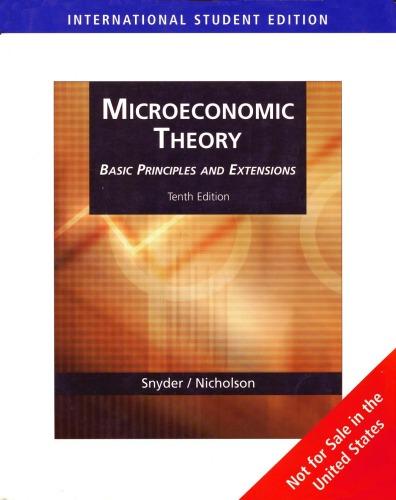17.9 Precautionary saving and prudence The Query to Example 17.2 asks how uncertainty about the future might
Question:
17.9 Precautionary saving and prudence The Query to Example 17.2 asks how uncertainty about the future might affect a person's savings decisions. In this problem we explore this question more fully. All of our analysis is based on the simple two-period model in Example 17.1.
a. To simplify matters, assume that 8 in Equation 17.15. If consumption is certain, this implies that U(0) U() or coc. But suppose that consumption in period 1 will be subject to a zero-mean random shock, so that c = cf+x, where ef is planned period-1 consumption and x is a random variable with an expected value of 0. Describe why, in this context, utility maximization requires U'(0) = E[U'()].
b. Use Jensen's inequality (see Chapters 2 and 7) to show that this person will opt for cf > coif and only if U' is convex-that is, if and only if U" > 0.
c. Kimball suggests using the term "prudence" to describe a person whose utility function is characterized by U" > 0. Describe why the results from part
(b) show that such a definition is consistent with everyday usage.
d. In Example 17.2 we showed that real interest rates in the U.S. economy seem too low to reconcile actual consumption growth rates with evidence on individuals' willingness to experi- ence consumption fluctuations. If consumption growth rates were uncertain, would this explain or exacerbate the paradox?
Step by Step Answer:

Microeconomic Theory Basic Principles And Extensions
ISBN: 9780324585377
10th Edition
Authors: Walter Nicholson, Christopher M. Snyder






